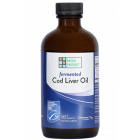Vitamin D - All your questions answered!
- By Patrick McCarthy (MSc)
- 3 Nov 2021


Vitamin D has become of the most searched terms on the internet today, and is often mentioned in widely-watched podcasts and TV shows. This is largely due to the role it plays in modulating immune function, which is an area of growing interest during the global pandemic. However, as with all nutrition topics, when interest grows, so too do false and exaggerated claims by those trying to sell you something.
In the following article, our nutrition specialist, MSc Patrick McCarthy, will aim to answer all of the most common questions about all things vitamin D, the forgotten vitamin.

What is vitamin D?
Vitamin D is one of the essential micronutrients, and is a fat-soluble vitamin. Vitamins are needed in larger amounts than minerals but still much less than the larger macronutrients. The “fat-soluble” nature of vitamin D simply means that the vitamin requires a source of fat to be efficiently absorbed in the body.
What is vitamin D good for?
Vitamin D is known to play many roles in health. During the COVID pandemic, many claims were made about the vitamin, some factual and others not so much. While it is most important for bone health, calcium absorption and hormone production, it does play a role in a strong immune system.
How?
Well, every cell in the body has a receptor for vitamin D, and immune cells are no exception! The vitamin can have an autocrine effect on these cells, activating them once it is bound and helping to enhance immunologic response (Source: NCBI).
Here are some of the well-evidenced benefits of vitamin D:
- Supports bone health
- Facilitates calcium absorption
- Supports immune function
- Muscle function
- Nervous system support

Are there different forms of vitamin D?
Yep! Many people are not aware that there are different forms of vitamin D. In fact, the term vitamin D symbolises a group of vitamins, not just one.
One form, we absorb from sunlight when the ultraviolet rays are exposed our skin, needs to be converted several times before reaching its active form in the body.
When in the body, this is converted to Calcidiol by the liver, and then moves to the kidney where it is converted to Calcitriol. This is now in its active form and can be used by all of our cells (Source: NIH).
In foods and supplements, vitamin D comes as either vitamin D2 or D3, which are very similar in their chemical structure. Both of these however, need to be converted to the active hormone in the liver and kidneys, as does that absorbed from the skin. We get vitamin D2 from plant sources and vitamin D3 from animal foods such as meat, fish and dairy.
And while there is not exhaustive evidence, there is some to show that vitamin D3 may contribute more effectively to vitamin D stores in the body (Source: Examine.com).
What foods are rich in vitamin D?
There are several foods that contain a rich source of vitamin D, but the most reliable source is often a supplement, preferably in the form D3. For example, the most common source of vitamin D is milk, but this is becoming less and less reliable in recent years (Source: Examine.com & NCBI).
The following foods can be good sources of vitamin D, however, if you do not consume these regularly or do not get daily exposure to sunlight, you should potentially consider supplementation.
- Animal liver meat
- Salmon, trout and cod
- Mushrooms
- Milk
- Eggs
- Fortified foods
- Tuna fish, sardines
(Source: NIH)
Should I supplement with vitamin D?
This depends on several factors, although vitamin D is one of the most heavily relied upon and recommended supplements in the world! If you live in countries that have long, dark winters, than it is likely that you won’t get enough natural exposure to sunlight.
In addition, if you live in northern European countries, supplements are often part of national recommendations. It has been shown that the sun is only at the required angle for your skin to absorb the UV rays, for a short few hours each day.
So, if you live in a country that is prone to long, winter nights a high-quality vitamin D3 supplement will be a great option. It is generally recommended to aim for 25 - 50 μg (1000 - 2000 IU) each day (Source: Examine.com), although official recommendations are 15 - 25 (600 - 1000 IU) a day (Source: NIH).

Are there different forms of vitamin D supplements?
Vitamin D supplements come in the form of vitamin D2 (ergocalciferol) or vitamin D3 (cholecalciferol). Vitamin D3 is the form most common in fish and animal sources, while D2 is most commonly sourced from plant foods. While there is very little difference between these, a slight discrepancy in their chemical structure leads to the different names (Source: NCBI).
According to Examine.com and several studies, vitamin D3 has been touted to increase circulating vitamin D levels (in the form of 25-hydroxyvitamin D) more than D2, and so it is recommended to take the supplement in this form (Source: NCBI).
How much vitamin D should I get if I am..?
Vitamin D recommendations are highly variable and depend on the age, nutrition and health status, location and lifestyle of the individual.
The European Food Safety Authority have set the adequate intake at 15 μg (600 IU) for adults, assuming little to no sun exposure (Source: EFSA). However, there are many other national governing bodies that have different recommendations, based on their specific location and other factors.
The Danish Veterinary and Food administration for example, provides very specific recommendations for danish citizens.
- All children and adults should supplement with 5 - 10 μg of vitamin D from October to April.
- 10 μg is required throughout all months of the year for infants (2 weeks - 4 years), unless they are receiving infant formula fortified with vitamin D ( 1.3 µg per 100ml).
- 10 μg is recommended throughout all months for those that do not get daily access to the outdoors, who have dark skin and/or pregnant women.
- Elderly over the age of 70 and those in nursing homes require 20 μg of vitamin D daily along with 800-1000 mg of calcium.
(Source: ALTOMKOST)

Takeaways
What would a blog be without some juicy, yet tangible takeaways? Here are some important points to remember when sifting through the masses of information on the web.
- Vitamin D is the term for a group of vitamins, or hormones in the body.
- Ultraviolet light delivers the prohormone of vitamin D to our skin, which is absorbed and converted into the active form in the body.
- In the spring and summer months, it is possible to get enough natural vitamin D, but many still do not. It is also important to avoid excessive sunlight exposure due to the adverse impact this can have on skin.
- Vitamin D supplementation is recommended during the winter months in many countries. During these months, the sun occupies the required angle in the sky for vitamin D supply for a short few hours, and so deficiencies are more common.
- When supplementing, look for products in the vitamin D3 form. The optimal daily intake appears to be between 1000 - 2000 IU a day.
















